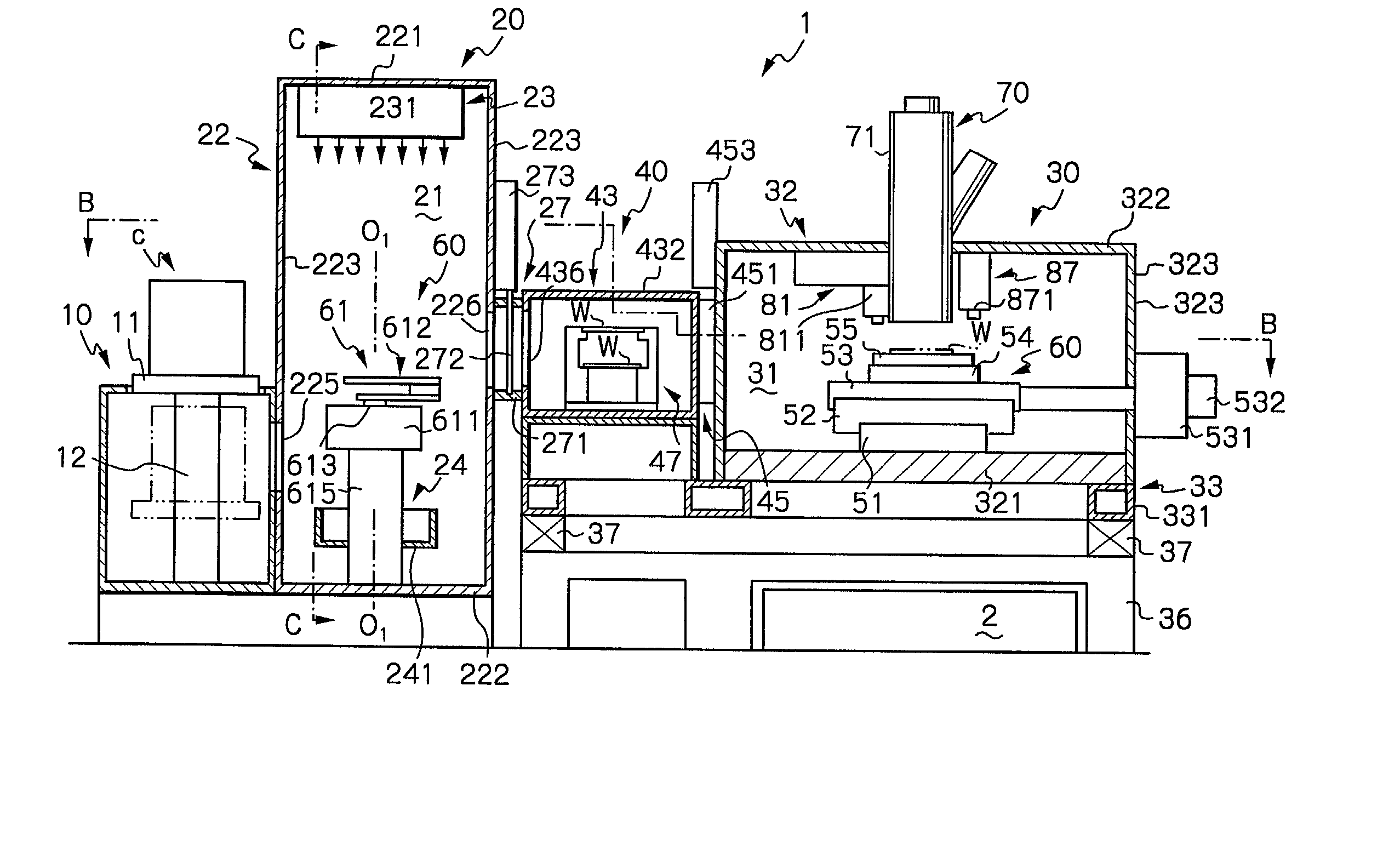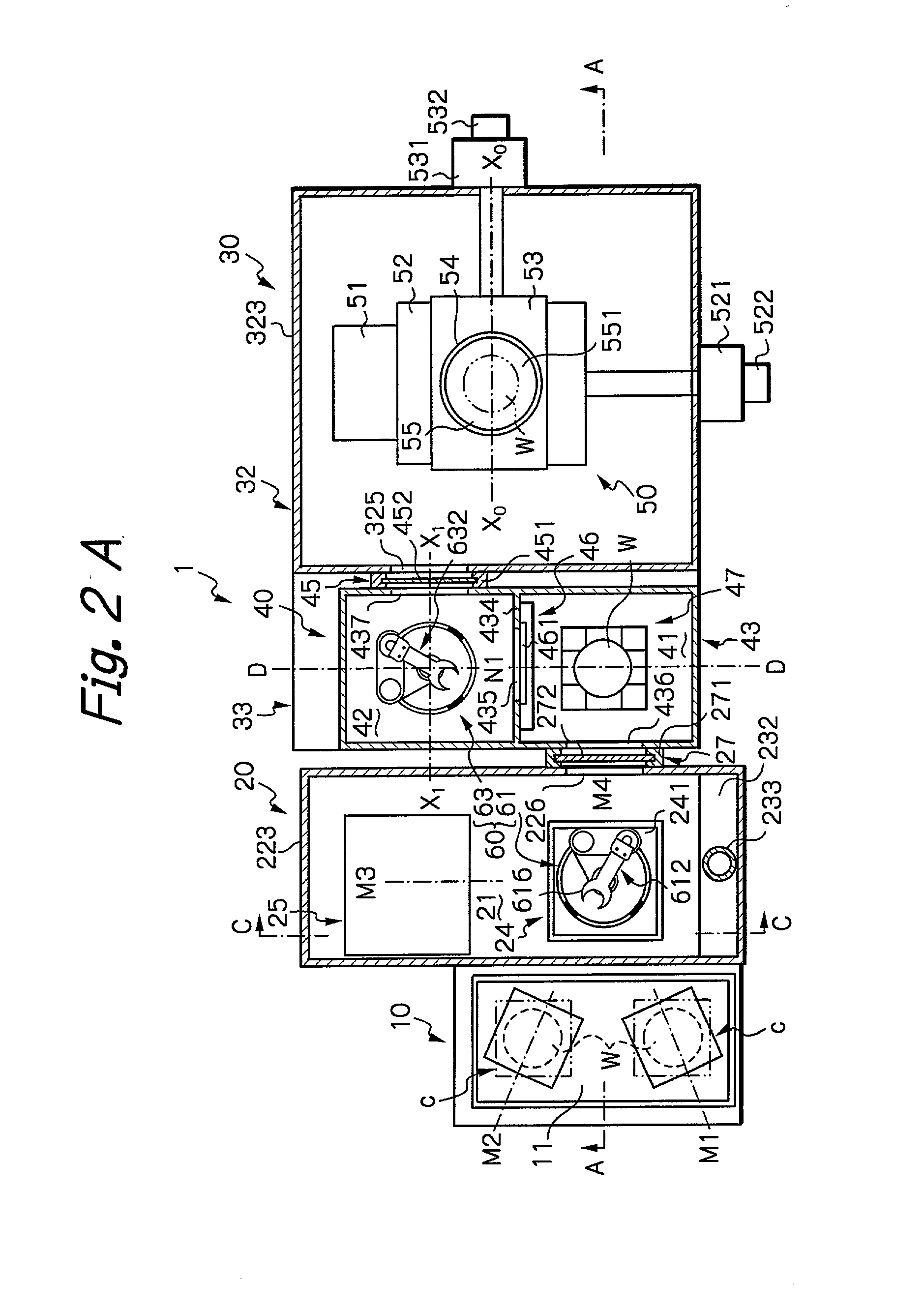Inspection system by charged particle beam and method of manufacturing devices using the system
a technology of charged particle beam and manufacturing device, which is applied in the direction of material analysis using wave/particle radiation, photomechanical equipment, instruments, etc., can solve the problems of limited optical resolution, inferior throughput to optical methods, and the use of electron beam methods
- Summary
- Abstract
- Description
- Claims
- Application Information
AI Technical Summary
Benefits of technology
Problems solved by technology
Method used
Image
Examples
second embodiment
[0466] FIG. 19 shows a precharge unit of the present invention. FIG. 19 shows an irradiation source of such type that irradiates an electron beam as a charged particle beam. The irradiation source comprises a hot filament 821, a deriving electrode 824, a shield case 826, a filament power supply 827, and an electron deriving power supply 823. The deriving electrode 824 is 0.1 mm in thickness, has a slit 0.2 mm wide and 1.0 mm long, and is arranged relative to the filament 821 of a diameter of 0.1 mm so as to take the form of a three-electrode type electron gun. The shield case 826 is also provided with a slit of 1 mm wide and 2 mm long, and is assembled so that the shield case 826 is spaced from the deriving electrode 824 by 1 mm with its slit center being aligned with the slit center of the deriving electrode 824. The filament is made of tungsten (W), and it is found that an electron current of in the order of .mu.A can be obtained with a current of 2 A being supplied to the filamen...
third embodiment
[0468] FIG. 20 shows a precharge unit of the present invention. FIG. 20 shows an irradiation source of a type that irradiates ions 829 as a charged particle beam. This irradiation source comprises a filament 821, a filament power supply 822, an electric discharge power supply 827, and an anode shield case 826, in which both of anode 828 and the shield case 826 have the same sized slit of 1 mm.times.2 mm respectively formed therethrough, and they are assembled so that the centers of both slits are aligned with each other. Ar gas 830 is introduced into the shield case 826 through a pipe 831 with about 1 Pa and this irradiation source is operated by way of an arc discharge caused by the hot filament 821. The bias voltage is set to a positive value.
fourth embodiment
[0469] FIG. 21 shows a plasma irradiation type of a precharge unit according to the present invention. It has the same structure as that of FIG. 20. The operation thereof, similarly to the above description, is made effective by way of the arc discharge by the hot filament 821, in which by setting the bias potential to 0V, the plasmas 832 are forced by gas pressure to effuse through the slit to be irradiated onto a sample substrate. Since in the plasma irradiation method, the beam is composed of a group of particles that has both positive and negative charges, which is different from the other irradiation methods, it allows both positive and negative surface potentials in the surface of the sample substrate to approach zero.
[0470] A charged particle irradiating section 819 arranged in the proximity of the sample substrate W has a configuration as illustrated in any of FIGS. 18 to 21, which is designed to irradiate charged particles 818 onto the sample substrate with a suitable condi...
PUM
| Property | Measurement | Unit |
|---|---|---|
| energy | aaaaa | aaaaa |
| energy | aaaaa | aaaaa |
| wavelength | aaaaa | aaaaa |
Abstract
Description
Claims
Application Information
 Login to View More
Login to View More - R&D
- Intellectual Property
- Life Sciences
- Materials
- Tech Scout
- Unparalleled Data Quality
- Higher Quality Content
- 60% Fewer Hallucinations
Browse by: Latest US Patents, China's latest patents, Technical Efficacy Thesaurus, Application Domain, Technology Topic, Popular Technical Reports.
© 2025 PatSnap. All rights reserved.Legal|Privacy policy|Modern Slavery Act Transparency Statement|Sitemap|About US| Contact US: help@patsnap.com



